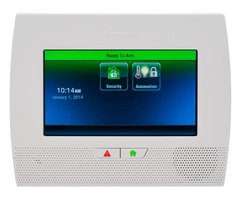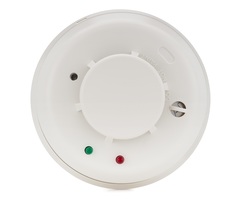Honeywell 5808W3: Program Low Temp Zone on L7000
Related Products


Related Categories
Description
An alarm system protects against break-ins and other unauthorized access. Beyond person-based threats, the system can protect your home against environmental threats, too. This tutorial shows how to program your existing Honeywell 5808W3 to protect against cold temperatures.
After setup, the alarm will sound if the temperature in an area of your home drops below 41 degrees. A drastic drop in temperatures can cause pipes to freeze and burst. While not strictly a lifesaving feature, a fast warning for plummeting temps can protect your property.
As the video explains, the same sensor you’re already using for the 5808W3 can be programmed to detect temperature. Don’t worry – security, tamper and fire protections remain in place.
The tutorial shows you how to program a low-temperature zone using the unit’s control panel. To do this, you’ll need to first enter the Tools section. This requires inputting your installation code, selecting Program and then Zones.
You’ll create new zones for cold detection. However, there’s really no need to program your entire house. In the example, we create zones for areas where cold temps and burst pipes are most likely to be an issue. These are often the lower levels of a house such as a garage or basement.
You’ll need to know the serial number of the sensors in the room where you want cold coverage. The video shows you where to find these numbers on the sensor packaging.
The video also provides a solution to a common problem. Many people accidentally try to add cold temperature detection to an existing zone. Unfortunately, this creates an error message reading “Duplicate Serial or Loop Number.”
Instead, you’ll want to set up low temp zones on loop three. The tutorial walks you through the steps to put the sensor on the loop and then configure the device for temperature.
You’ll also set the temperature detection to 24-hour auxiliary. After all, you never know when the temperature might quickly plummet.
Each zone can be labeled in two categories. In the example shown in the video, we label a zone as Downstairs and Cold. This lets us easily identify the part of the house being monitored as well as the type of detection in effect.
Proper setup is important because you want accurate information if the alarm ever activates. By following the guide in the tutorial, your control panel will display the phrase “Low Temperature Zone” in the event of a sudden temp drop. This lets you instantly know which part of the home you need to check out.
If more than one event occurs simultaneously, the display will cycle through each event. We’ll show you how to conduct a test using a ballpoint pen. In the video, our test set off both the fire and low-temperature alarm for a downstairs zone.
Setting up low-temperature detection adds a useful feature to your existing alarm system. Our video covers everything you need to know about how to designate low-temperature zones. A burst pipe can cause a lot of damage, but setting up cold air detection can help keep your home safe and dry.
Transcript
One other thing you can do with this device and the Lynx Touch L7000-- and this is a great way to get added value out of this sensor-- is to learn in another zone, the same exact serial number, which again is 0 9 8 8 4 0 2. We do Done.
If we tried to save it, we get this error. You get that loud tone. It says error with an exclamation. And it shows duplicate serial or loop number.
We talked earlier. You cannot have two sensors in the panel with the same serial number and the same loop number. So we hit OK, and we realize we made a mistake.
We go to loop three. On this 5808W3, loop three, with that serial number, will protect for a low temperature alarm. If the temperature in the home goes below 43 degrees, it will indicate an alarm on the temperature zone. And you know, you're protected against burst pipes.
It's actually-- I'm sorry 41 degrees, but it would indicate that the temperature in that room got too low. And you're approaching a burst, frozen pipes, burst pipes, that kind of environmental issues. So not life safety, but there's all kinds of reasons why you would want to know if your house got that cold.
And wherever this is mounted, not only is it protecting smoke and heat on loop number one, it's protecting from the device popping the cover on the tamper, on loop number four, which is automatically learned. And then one more zone for loop three, device type temperature, 24-hour auxiliary is the default option and is the option you should choose.
And then you could do downstairs.
Dock. Down, down, downstairs.
And then you could do low.
Laundry, location lower. Machine locked.
Or actually downstairs.
Cold.
Downstairs, cold, temperature. So again, same serial number as our smoke and heat zone, loop number three. The rest we leave supervised, alarm report, and all that. We Save that.
And should the temperature in the room drop below 41 degrees, instead of the zone for the smoke and the heat going off, you would get the low temperatures zone. And to show you if we test this, again--
Disarmed, not great ready to arm. Check zone.
You would see it indicates both the fire and the downstairs cold. Testing this one device triggered both alarms. And the panel will toggle through and show you both alarm that was triggered and again, a great way to get the added value of a 5808W3.
One detector is giving you quite a bit of protection, smoke protection, high heat protection, and low temperature protection. Disarm again. Clears.
Disarmed. Ready to arm.
Clears it back, ready to arm. And that is our 5808W3.
- Uploaded
